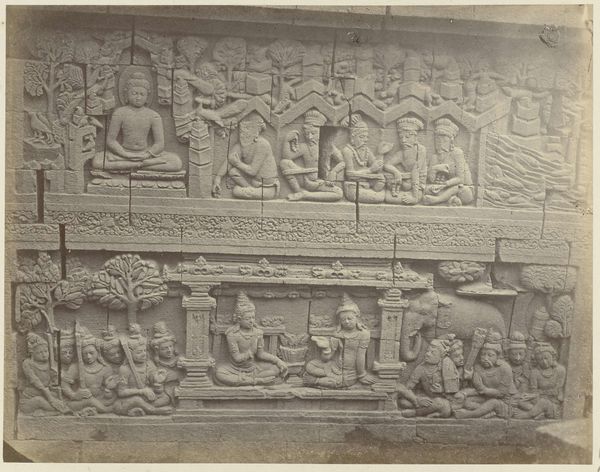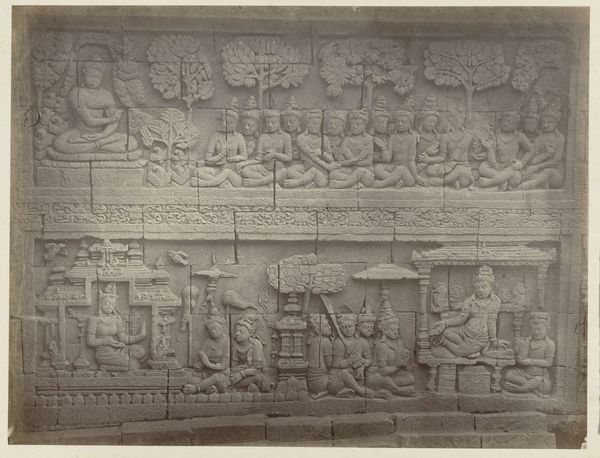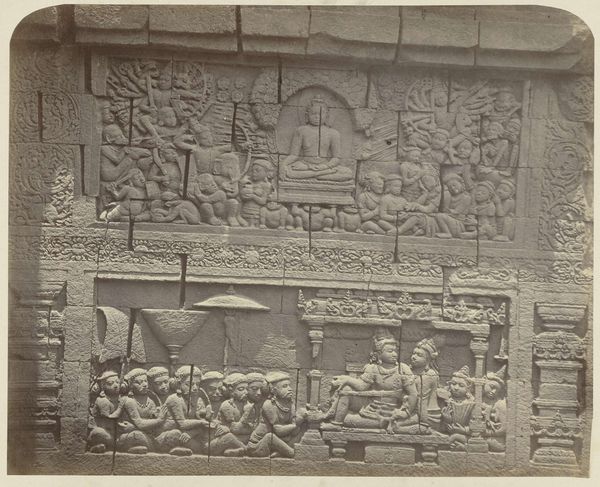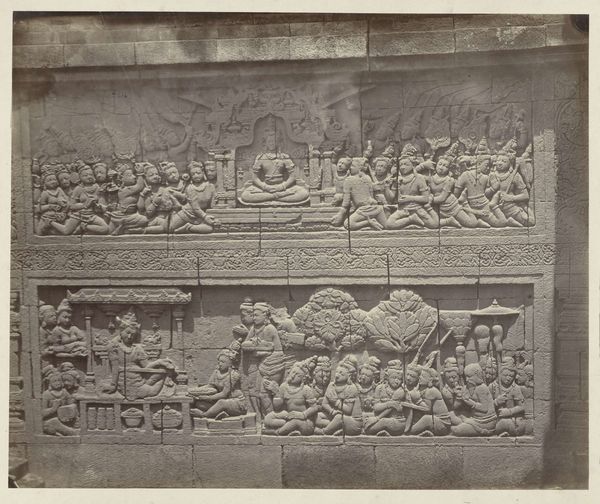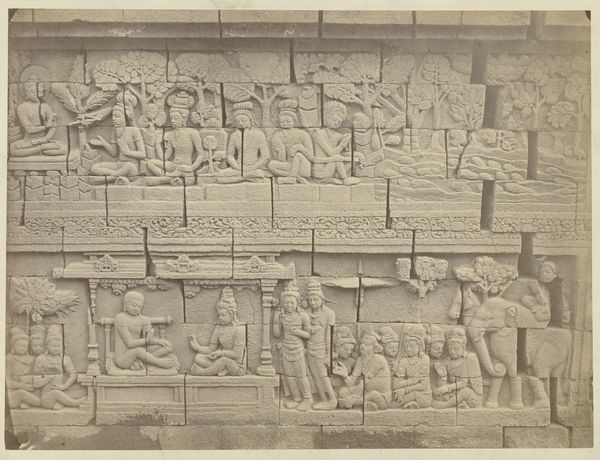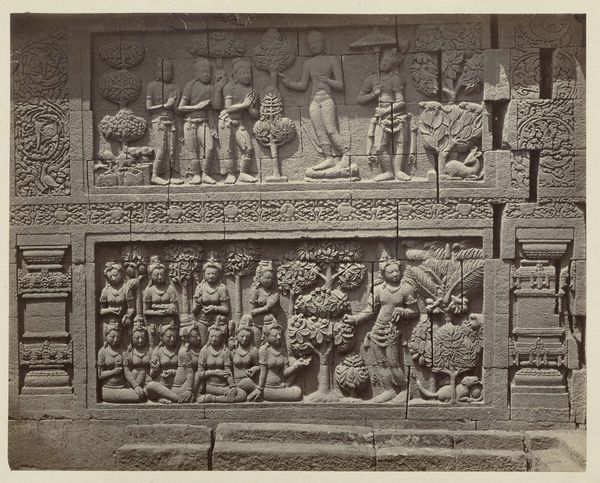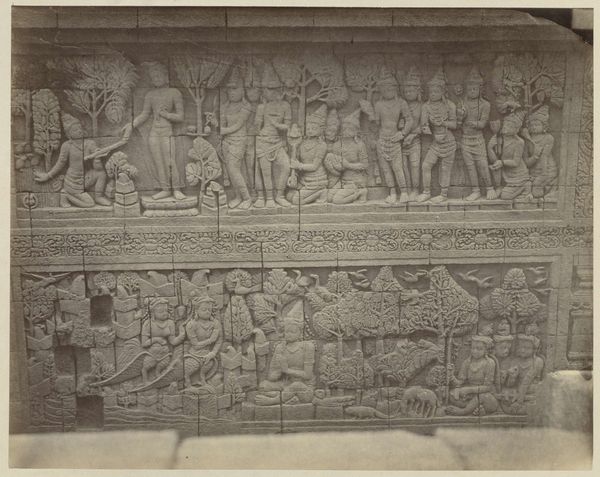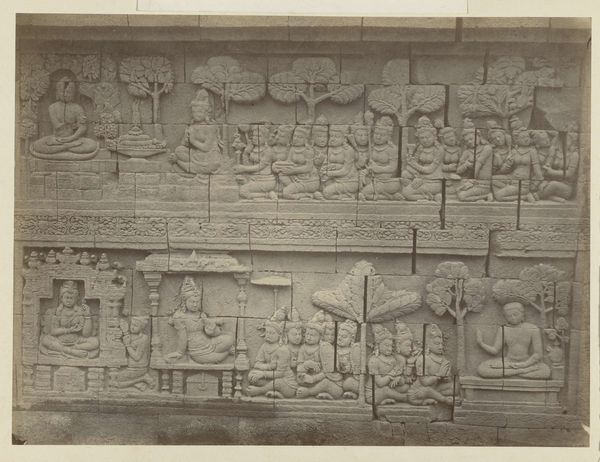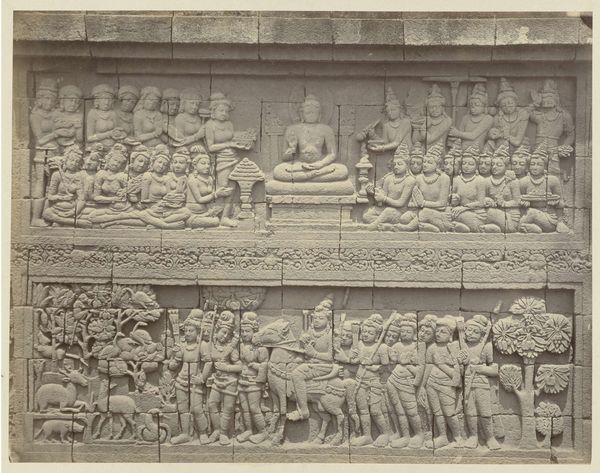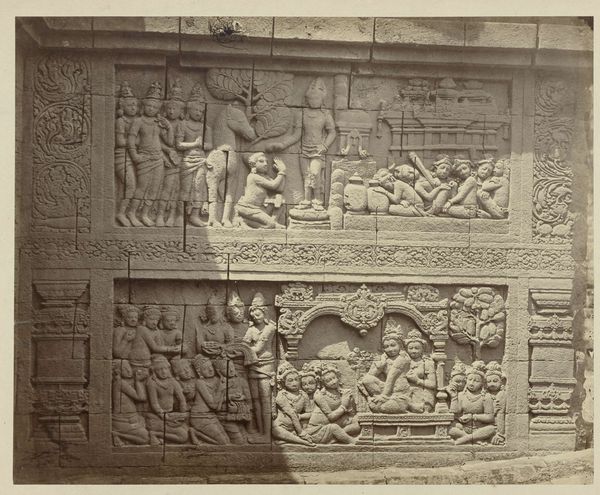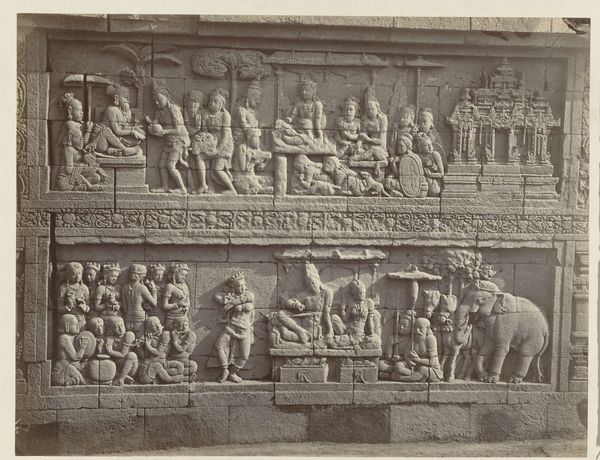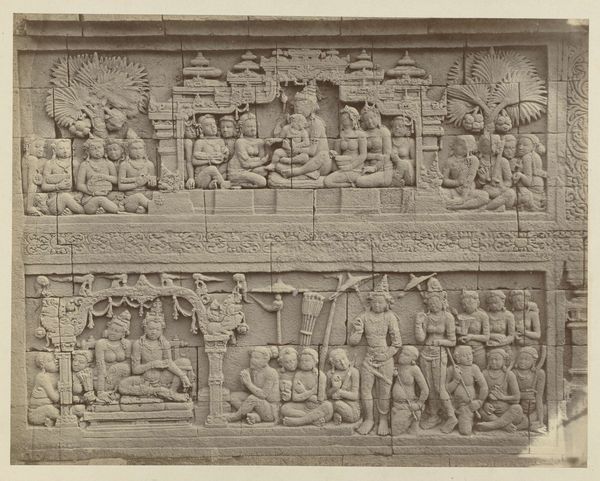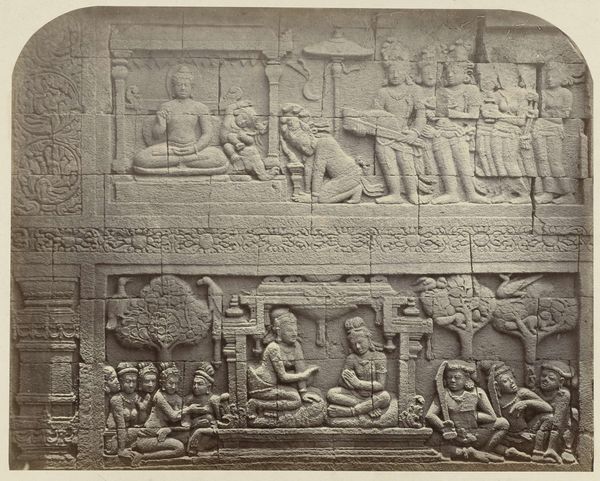
Basreliëf in de muur aan de zuidzijde van de Borobudur met een Gandavyuha vertelling. Possibly 1873 - 1879
0:00
0:00
relief, sculpture
#
narrative-art
#
asian-art
#
relief
#
indigenism
#
figuration
#
ancient-mediterranean
#
sculpture
Dimensions: height 300 mm, width 400 mm
Copyright: Rijks Museum: Open Domain
Curator: This intricate bas-relief is believed to have been captured by Isidore Kinsbergen sometime between 1873 and 1879. It's a portion of the Gandavyuha narrative, carved into the south-facing wall of Borobudur. Editor: It’s so densely packed with figures! It feels incredibly ordered and yet…a little chaotic at first glance. The depth of the carving makes it almost pop out. Curator: The order speaks to the Buddhist principles represented within the Gandavyuha story, which tells of a quest for enlightenment. Kinsbergen’s image allows us to consider Borobudur’s layered socio-political functions in Dutch colonial Java and beyond. The relief presents a highly gendered spiritual journey, but how do we reconcile this within a globalized and interconnected world of diverse, marginalized perspectives? Editor: Exactly. It raises so many questions about access and representation. Were the figures depicted meant to resonate with the diverse groups who came to Borobudur, and who was ultimately excluded? I’m interested in how the reliefs served as a method of ideological dissemination but also an invitation for meditation. Curator: Kinsbergen's photography of it also served its own purpose. These images were circulated widely, helping to solidify European perceptions of Southeast Asian art and culture within a colonial framework. Editor: Absolutely. And that colonial gaze is vital. We have to remember Kinsbergen's photographs also functioned as a form of documentation but also a form of power. Photography and images in general during this time, functioned as ethnographic and propaganda tools. But returning to the image, you see figures sitting cross legged and what is really compelling is the various tiered stages or architectural components around them and above them. Curator: Yes, the artist captures elements of the journey towards self-realization, highlighting its staged aspects but it would be worthwhile for future art analysis to incorporate gender studies, critical race studies and more in decolonizing Borobudur art and spiritual importance. Editor: It underscores how deeply interconnected history, representation, and interpretation are, and perhaps through continuing these conversations can help move us forward.
Comments
No comments
Be the first to comment and join the conversation on the ultimate creative platform.
